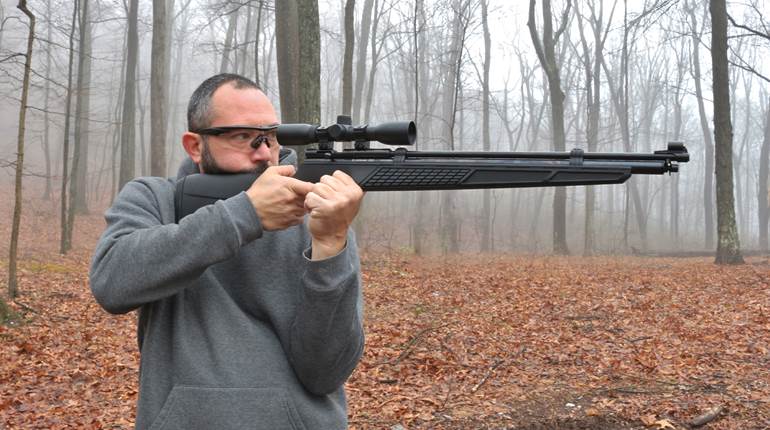
The Super .30 cartridge, better known as the .300 H&H Magnum, is one of the most significant and influential hunting cartridges ever invented, with a family tree that includes our venerable .30 Government (.30-’06) and the .375 Holland & Holland Magnum, the world’s first “magnum.”
The year was 1920, only two years since the Treaty of Versailles concluded the “war to end all wars,” which left the flower of Britain to die in the mud of Flanders. But spirits were soaring in the post-war boom of the “Roaring Twenties,” when technology was accelerating faster than anyone could have ever imagined. The electric light, indoor plumbing, refrigeration, the automobile, the airplane and voices from nowhere were being invented. Everywhere you looked, things were shiny, new and exciting.
Hunting safaris to Africa were still relatively new, though well-heeled sportsmen were captivated by tales of adventure and excitement after reading about President Teddy Roosevelt’s nine-month-long safari in 1909. Safari companies were springing up in Nairobi to outfit the lords, ladies and gentlemen that were taking steam ships through an amazing new creation—the Suez Canal—to reach the Dark Continent.
Hunting arms were in the throes of a technological revolution on par with the stunning developments of the light bulb, automobile and radio. In 1889, smokeless powder arrived in Great Britain in the form of cordite, a low-pressure propellant that, while anemic compared to modern powders, was nonetheless a staggering improvement over blackpowder. British gunmakers immediately set about developing their own proprietary cartridges using cordite to compete for the lucrative business of safari-bound customers.
The first such cartridges to be loaded with cordite were termed “express,” named after an equally new phenomenon, the high-speed train. The active ingredient in cordite is nitroglycerine so the term “nitro express” was coined as a marketing buzzword to differentiate the hot, new smokeless cartridges.
The Germans beat the British to the innovation punch with a metric number called the 9.5x57 mm Mannlicher-Schonauer, the first cartridge to feature a belt of brass around its base to headspace the cartridge because it lacked a rim, the usual means to headspace a cartridge in breech-loading firearms like the double rifles so prevalent at the time. Another German invention, the Model 98 Mauser, had redefined the hunting rifle, ushering in the bolt-action as the favored mechanical means to shoot accurately and reliably in the field. A rim is a huge problem in a bolt-action rifle because it causes cartridges to stack unevenly and presents an obstacle to feed the round from the magazine into the rifle’s chamber. No such impediment had ever hampered rimmed cases, like the blackpowder (and later cordite) rounds like the .500 Nitro Express or .450 Nitro Express. The solution was the belted magnum cartridge case that we know so well today.
London gunmaker Holland & Holland was at the forefront of cartridge development. In 1902, the company borrowed the idea of a belt from the 9.5x57 mm and applied it to a new case of its own design, the .375 Belted Rimless Nitro Express. At once perfectly descriptive and also a mouthful to say, the .375 Belted Rimless Nitro Express became better known as the .375 H&H Magnum.
Meanwhile, across the Atlantic, amazing things were happening with rifles in a new bore diameter of .30 caliber. The .30-40 Krag proved to be an excellent military cartridge, but it could be improved. The new .30 Government, adopted in 1906 as the .30-’06, was even better. The Brits got a nice up-close-and-personal look at the .30 caliber in action in France—and they liked what they saw.
In 1925, blending its .375 Belted Rimless Nitro Express and the .30-’06, Holland & Holland announced the new Super Thirty. The first rifle entered into its hallowed sales register on Oct. 1, 1926. The Super Thirty sported a belted case like Holland’s previous .375 H&H, but it came with a long, tapered neck sporting a gentle 16-degree shoulder angle (compared to the 29 degrees of the .375 H&H). The new round performed especially well with heavyweight bullets in the 200- and 220-grain range.
Right out of the starting blocks, the .300 H&H (as it came to be called) racked up an impressive win in the 1,000 yard Wimbledon Cup match at Camp Perry in 1935. It won again in 1937 and, not one to miss a speeding boat, Winchester announced the new Model 70 chambered in what it called the .300 Mag.
At the time, no other .30-caliber magnum existed, as the .300 Win. Mag. was still 20 years away. Roy Weatherby was not in the game yet with his .300 Wby. Mag. If you wanted a magnum, you could have any one you liked as long as it was Holland’s .300 H&H.
The .300 H&H is a handloader’s dream. Due to early guns made of comparatively weak steel, SAAMI and CIP pressure standards are conservative. However, with safe and judicious reloading, one can easily push a 180-grain bullet to 3,100 fps from the .300 H&H.
It’s nothing short of super, this Super Thirty. For versatility, accuracy and proven performance on big game with a curious attraction of looking so anachronistic with its long, tapered case, the .300 H&H Magnum remains a favorite plains-game cartridge.
Only on a few occasions in the history of small arms development has a “leap ahead” advancement in technology occurred. The self-contained cartridge is certainly one such paradigm-shifting invention as is the introduction of smokeless powder. The year 1898 stands out because that was when Peter Paul Mauser invented his eponymous Model of 98, the archetype bolt-action rifle. Cartridge development is less easy to spot.





































